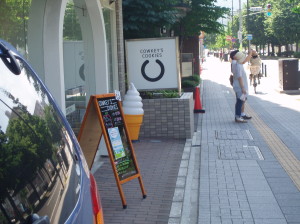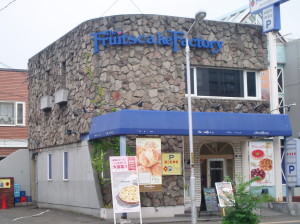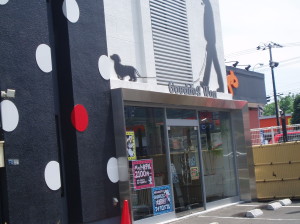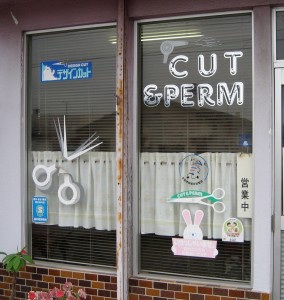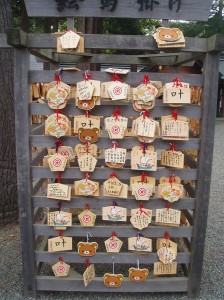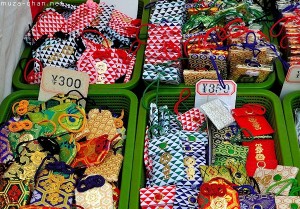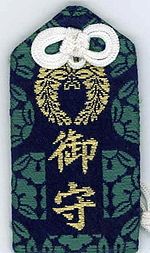Japonisme – related to Japan
Japonisme
This word expresses my first sensible recollections of exposure to things Japanese (as opposed to Western banzai movies and comics). Memories come from when I was about 10 years old.
My cousin and I were at a new state-of-the-art aquatic center on a beautiful summer’s day. We had no business being there, (tell you more about that at another time and place), but a Japanese couple with a young child befriended us. Maybe they felt a bit out of place like us. Many years later I worked in an art library and became familiar with the woodblock, paintings and other artforms from Japan which was considered to have enormous influence on modern Western art. I liked the word Japonisme. the germs of a later obsession with Japanese people and culture lay herein.
We have to start somewhere, so here goes (I promise a lot more will follow in time)
Strange Japanese English names and words
If you spend time in non-English speaking countries,
you will regularly find strange examples of English.
Signs on buildings and expressions on tee shirts are common examples.
I’m pretty sure you can also find strange use of foreign language in English countries!
But in this section, we are looking at English in Japan. Most of the photos are mine.
Here are a few examples of strange English expression:
Live Asahi for live people (Asahi beer).
Men’s Biggi (Menswear shop in Tokyo).
Wonders of electricity are displayed for children to be easily digested (sign-Electric Science Museum).
mecca of dude, dundy, or fop (Shop sign – Harajuku, Tokyo).
source – These 4 pictures are from:
http://www.huffingtonpost.co.uk/2013/03/08/japanese-to-english-funny-translations_n_2835459.html#slide=2197596
last accessed 18/02/2014
Omamori – Japanese good luck charms
During 2013, I stayed in Sapporo, Japan, for three months. During that time, my friend Ken and I visited the Hokkaido Shrine. It was a Monday and the weather was cold. Ken told me about the importance of shrines in Japanese culture. I was especially interested in the popular Japanese custom of omamori. Sometimes just called mamori, they are good luck amulets or charms which are sold at both Shinto shrines and Buddhist temples. Omamori are very popular everywhere in Japan. Almost everybody has an amamori in their wallet, in their purse or in the car. Ken said that the most common type of omamori, are the small silk bags you can see in the photos below. Inside the bags are a prayer written on paper or wood. Mamori means “protection”, but depending on the prayer, people have them for many different beneficial purposes such as good luck, good health, traffic safety, business prosperity, family happiness, entrance exams, pregnancy protection, and love. Ken told me an interesting fact is that an omamori must not be opened. The reason for this is that the opening would be disrespectful. Also, it is said that the charm may loose its good luck power or even bring bad luck.
new words
amulet; shrines; charms; temples; prayer; protection; logo; beneficial; prosperity; pregnancy; disrespectful
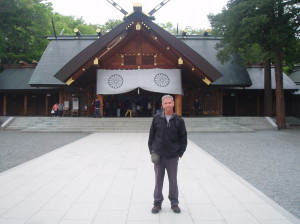
Denver at Hokkaido Shrine in Maruyama Park, Sapporo.
These are a type of omamori in the form of prayers written by people, hanging at Hokkaido Shrine.
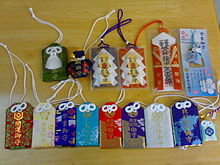
These are various omamori from different shrines in Japan.
These are omamori in various silk bags.
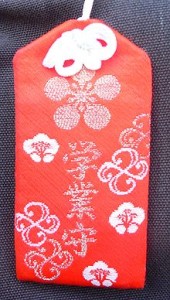
This is an omamori dedicated to study. The logo above denotes a Shinto shrine dedicated to the kami Tenjin, which means study.
This is another study-dedicated omamori, gakugyō-jōju, in a keychain.
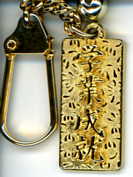
An omamori from a Shinto Shrine in Kumamoto. This item claims to “grant protection” to the user. The logo above denotes a Jodo Shinshu temple.
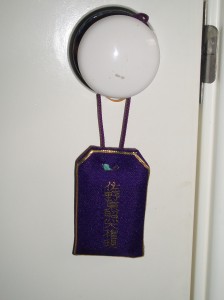
This is an omamori which a Japanese friend gave to my wife Alison.

